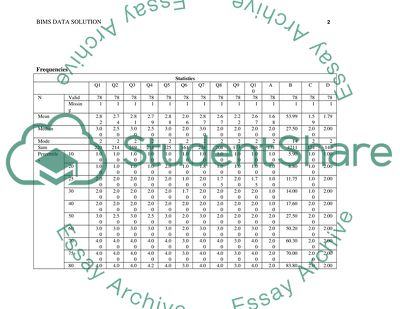Cite this document
(Analysis of the Data Included in BIMS Case by Computing Descriptive Statistics Project Example | Topics and Well Written Essays - 1500 words, n.d.)
Analysis of the Data Included in BIMS Case by Computing Descriptive Statistics Project Example | Topics and Well Written Essays - 1500 words. https://studentshare.org/statistics/1802189-bims-data-solution
Analysis of the Data Included in BIMS Case by Computing Descriptive Statistics Project Example | Topics and Well Written Essays - 1500 words. https://studentshare.org/statistics/1802189-bims-data-solution
(Analysis of the Data Included in BIMS Case by Computing Descriptive Statistics Project Example | Topics and Well Written Essays - 1500 Words)
Analysis of the Data Included in BIMS Case by Computing Descriptive Statistics Project Example | Topics and Well Written Essays - 1500 Words. https://studentshare.org/statistics/1802189-bims-data-solution.
Analysis of the Data Included in BIMS Case by Computing Descriptive Statistics Project Example | Topics and Well Written Essays - 1500 Words. https://studentshare.org/statistics/1802189-bims-data-solution.
“Analysis of the Data Included in BIMS Case by Computing Descriptive Statistics Project Example | Topics and Well Written Essays - 1500 Words”. https://studentshare.org/statistics/1802189-bims-data-solution.


